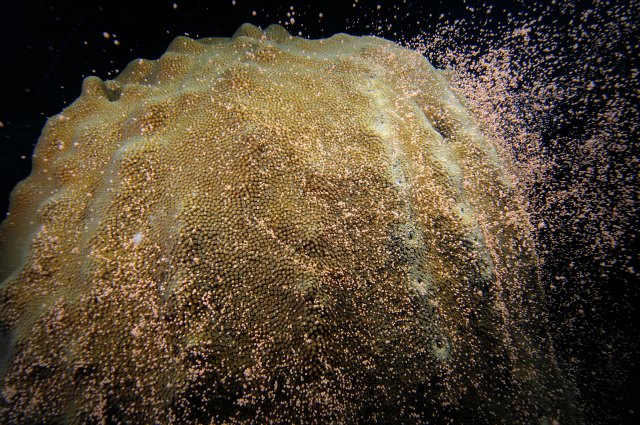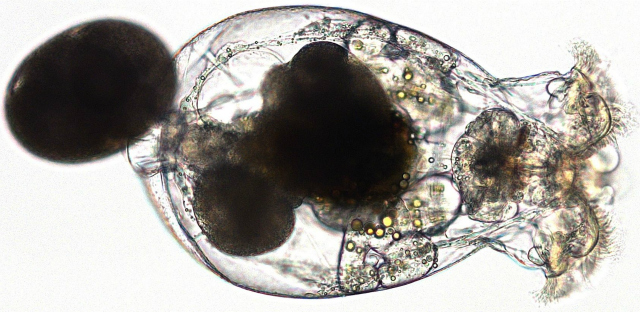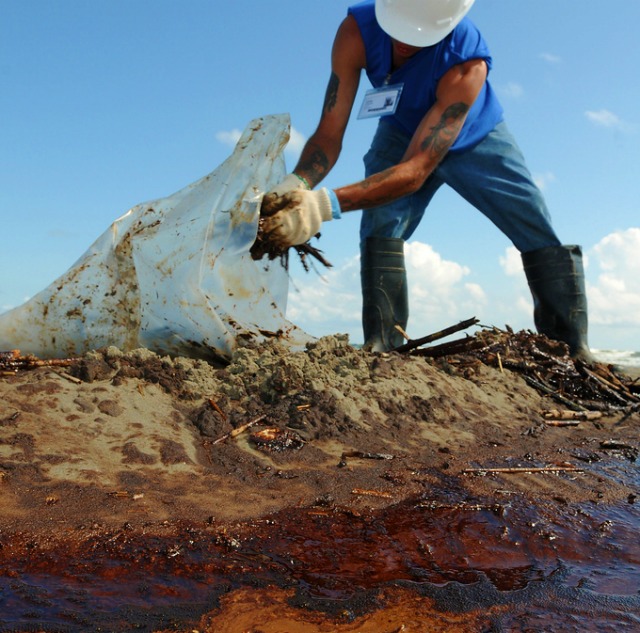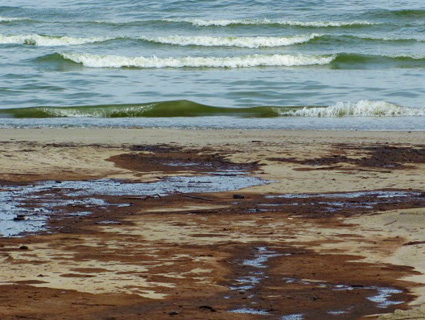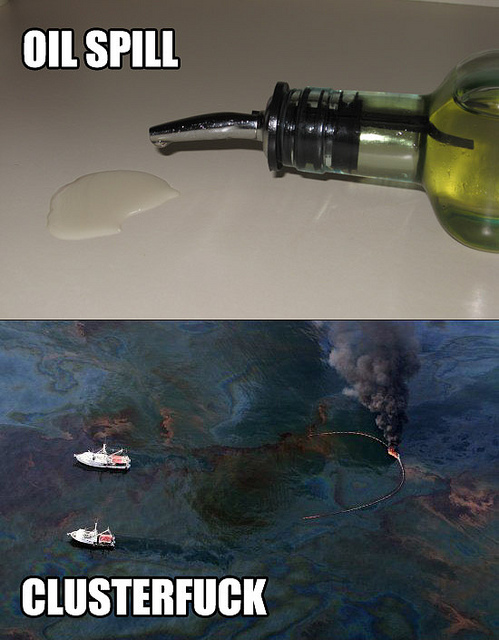
The Deepwater Horizon debacle began three years ago tomorrow.Credit: <a href="http://www.flickr.com/photos/johnjack/">Random McRandomhead</a> at <a href="http://www.flickr.com/photos/johnjack/4712579706/">Flickr</a>.
Great Britain, the home country of BP, has banned the stuff. So has Sweden. But BP says as long as the US allows it, they’ll use Corexit dispersant on their next oil spill. “If this vision becomes reality, long-term destruction to our health and environment will expand exponentially.” This according to a damning new report, Deadly Dispersants in the Gulf: Are Public Health and Environmental Tragedies the New Norm for Oil Spill Cleanups?, by the nonprofit Government Accountability Project (GAP).
The GAP report was issued today in advance of tomorrow’s three-year anniversary of BP’s monster debacle in Gulf of Mexico, the worst environmental disaster in US history, that killed eleven people and injured sixteen others. BP managed to hide most of the 4.9 million barrels of oil erupting from its maimed well from human eyes by flooding it with 1.84 million gallons of Corexit dispersant, both at the wellhead on the deep sea floor (a first) and at the surface.
That had devastating affects on human health, says the GAP, based on data they collected from extensive Freedom of Information Act requests and from evidence collected over 20 months from more than two dozen employee and citizen whistleblowers who experienced the cleanup’s effects firsthand.

The report cites four major areas of concern: 1) existing health problems; 2) failure to protect clean-up workers; 3) ecological problems and food safety issues; 4) and inadequate compensation. Ongoing health problems from the “BP Syndrome” include: blood in urine, heart palpitations, kidney and liver damage, migraines, multiple chemical sensitivity, memory loss, rapid weight loss, respiratory system and nervous system damage, seizures, skin irritation (burning and lesions), and temporary paralysis, plus long-term concerns about exposure to known carcinogens.
Failure to protect clean-up workers began with BP and the government misrepresenting known risks by asserting that Corexit was low in toxicity—this contrary to warnings in BP’s own internal manual—says the GAP. They cite other problems:
- Interviewed cleanup workers reported they either didn’t receive any training or didn’t receive the federally required training.
- Worker resource manuals detailing Corexit health hazards were not delivered or were removed from BP worksites early in the cleanup, when health problems began.
- Divers were allowed to enter the water after assurances it was safe and additional protective equipment was unnecessary, despite government agency regulations prohibited diving during the spill due to health risks.
- BP and the federal government publicly denied any significant chemical exposure to humans was occurring, though of the workers the GAP interviewed, 87% reported contact with Corexit while on the job, and subsequent blood test results revealed high levels of chemical exposure.
- BP and the federal government believed that allowing workers to wear respirators would not create a positive public image and the feds permitted BP’s retaliation against workers who insisted on wearing this protection. Nearly half of the cleanup workers interviewed by GAP reported that they were threatened with termination when they tried to wear respirators or additional safety equipment on the job. Many received early termination notices after raising safety concerns on the job.
- All workers interviewed reported that they were provided minimal or no personal protective equipment on the job.
As for compensation: “BP’s Gulf Coast Claims Fund denied all health claims during its 18 months of existence.“

Among the ecological damage in the report the GAP notes: “The FDA grossly misrepresented the results of its analysis of Gulf seafood safety. Of GAP’s witnesses, a majority expressed concern over the quality of government seafood testing, and reported seeing new seafood deformities firsthand. A majority of fishermen reported that their catch has decreased significantly since the spill.”
I’ve written extensively about ongoing problems regarding Corexit emerging from the science: overview here; dispersant made spill 52 times more toxic here; dispersant allowed oil to penetrate beaches more deeply here; fish hammered by oil and dispersant here; the decline of microscopic life on oil-and-dispersal-tainted beaches here, and horrific and ongoing whale and dolphin deaths here and here.
The GAP report demands that both BP and the government take corrective action to mitigate ongoing suffering and to prevent the future use of this toxic substance, including: a federal ban on Corexit; Congressional hearings on the link between the current public health crisis in the Gulf and Corexit exposure; immediate reform of EPA dispersant policy, specifically to determine whether such products are safe for humans and the environment prior to granting approval; establishment of effective medical treatment programs run by medical experts specializing in chemical exposure for Gulf residents and workers; funding by the federal government of third-party independent assessments of both the spill’s health impact on Gulf residents and workers, and such treatment programs when established.
